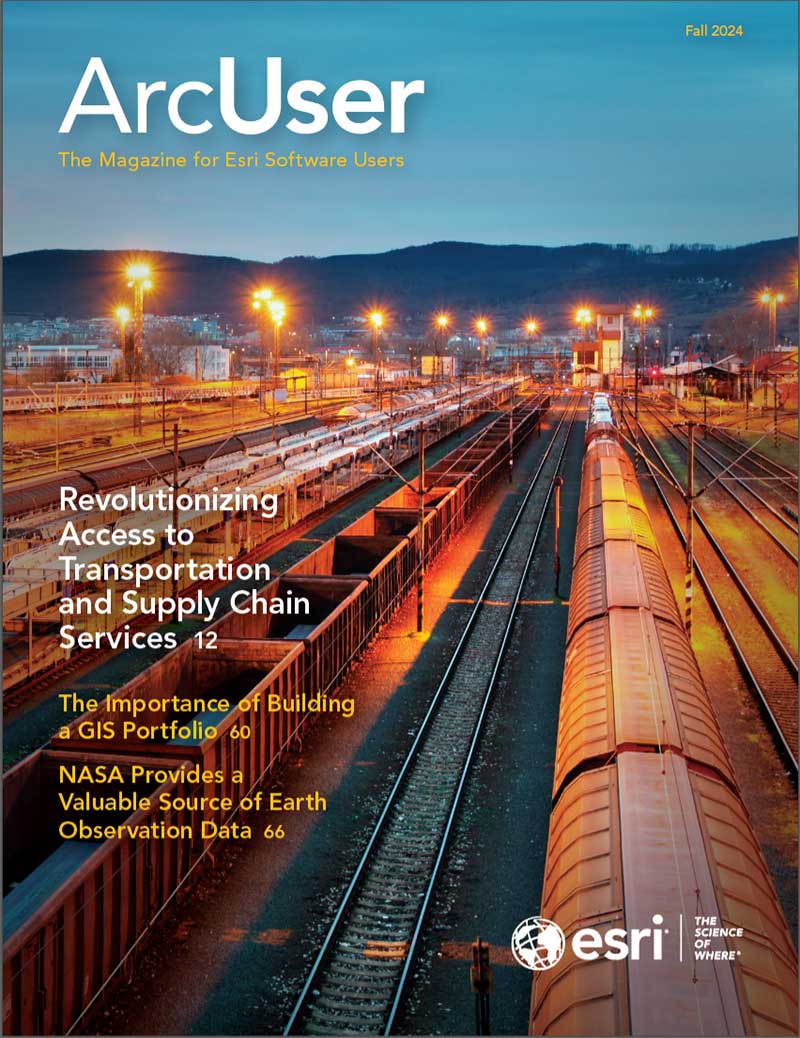Located in the heart of Silicon Valley, San José Mineta International Airport (SJC) transformed its process for managing tenant inspections from a manual data collection process to one that is GIS based.

Managing Airport Tenants
SJC is an international airport that encompasses 1,120 acres, hosts 11 commercial airlines, and sees approximately 12 million passengers pass through its gates each year. Airports are often referred to as cities, given the multifaceted nature of their operations and the diverse spaces they encompass. Central to this characterization is the pivotal role of interior space maintenance, as it significantly contributes to creating a welcoming environment for passengers within these bustling hubs.
SJC carries out regular inspections of its spaces leased or rented by retail shops, restaurants, and service providers to evaluate their condition and compliance with contracts. Inspections cover the safety, cleanliness, and general maintenance of tenant spaces. The goal is to ensure that all tenant areas meet the airport’s standards and regulatory requirements.
Maintaining operational excellence is paramount. For years, dedicated property managers relied on manual data collection methods to conduct quarterly tenant inspections. Each inspection involved handwritten notes and manual data entry into Microsoft Excel spreadsheets.

Inspection findings were communicated through lengthy email chains, leading to inefficiencies and occasional errors. The system, while functional, was far from optimal. Another challenge encountered by property managers using manual methods was the absence of a systematic process for tracking inspection follow-ups. In addition, although inspection findings were communicated, there was no integrated mechanism to monitor the completion status of the required repairs.
As the airport grew, the limitations of this manual process became increasingly apparent. The property management team faced numerous challenges: data inaccuracies, delayed reporting, insufficient tracking of identified repairs, and a cumbersome workflow that struggled to keep pace with the dynamic needs of a modern airport. It was clear that a change was necessary to elevate operations.
Recognizing the potential of technology to revolutionize its processes, SJC embraced a new survey system that integrated GIS into the process of tenant space inspections. By leveraging GIS technology, SJC aimed to streamline inspections and ensure a proactive and systematic approach to facility maintenance.
Food and beverage outlets and retail stores are vital commercial spaces at SJC. Maintaining the cleanliness of these spaces is critical. The move from manual to digital concession inspections began with these tenants, although the plan is to eventually employ digital methods for the inspection of all tenant spaces, including airline offices, service providers, and maintenance facilities.
The Role of GIS in Streamlining Airport Business Processes
Ten years ago, SJC implemented GIS technology to oversee the geospatial data associated with the airport, including data on runway and taxiway layouts, airfield signage and lighting, passenger terminals, aircraft parking stands and jet bridges, baggage handling areas, building footprints, and utilities.
Recently, there has been a concentrated effort to integrate the geospatial data with other business processes or systems within the airport. GIS at SJC was migrated from a stand-alone ArcGIS Server to ArcGIS Enterprise, which made tools such as ArcGIS Survey123 available.
GIS was adopted to modernize and enhance the efficiency of managing tenant spaces by centralizing data management and consolidating all tenant inspection data into a single, accessible platform. As part of this comprehensive integration strategy, the survey system is seamlessly linked with GIS.
The airport’s GIS team conducted a comprehensive analysis. They examined ways to modernize and identify areas where GIS data can be used to streamline the inspection data collection process. As a result, the GIS team proposed implementing ArcGIS Survey123, a form-centric data gathering GIS method, as a transformative solution to replace handwritten survey notes.
Transforming Workflows for Efficiency
The strategy employed for implementing ArcGIS Survey123 divided the implementation process into three phases: 1) analysis and migration; 2) pilot testing and user adoption; and 3) full deployment and optimization.
Analysis and Migration
The transition began with a comprehensive analysis of the existing workflow. Previously, the procedure entailed using a paper form created in Microsoft Excel to evaluate tenant maintenance activities across categories such as customer service, facility, and equipment, back-of-house procedures, and exterior appearance. Each metric was subdivided to furnish detailed information on specific elements These field observations were entered manually into a computer, and the inspection findings were emailed to tenants.
Subsequently, this entire process was migrated to ArcGIS Survey123 and integrated with the GIS database containing tenant information, so that it became the primary repository for that information. Criteria were systematically organized into user-friendly drop-down menus within ArcGIS Survey123 to facilitate scoring. An overall score field was added for each metric in the inspection findings, along with a new field to compute the total possible score for each concession, which represented the highest achievable score for tenants. This system provides a comprehensive overview and aligns the new system with the current workflow.
Pilot Testing and User Adoption
To maximize the effectiveness of the new methodology, pilot testing was initiated in June 2023. Over three months, a select group of users with the Survey123 system installed on Apple iPad devices conducted extensive testing. Valuable feedback was incorporated into ArcGIS Survey123, ensuring that the changes implemented addressed the practical needs and concerns identified during the testing phase. Iterative feedback allowed for the identification and resolution of any issues and inclusion of any adjustments and improvements needed before full-scale implementation.
Concurrently, a robust training program was executed to familiarize all relevant personnel with the new system, ensuring a smooth transition and minimizing disruptions. This training was crucial in preparing the staff for the changes and ensuring they could use the new system effectively.
Full Deployment and Optimization
Following the successful completion of pilot testing and training, the project moved to the final phase in March 2024. It focused on the full deployment of ArcGIS Survey123 to all users. Continuous monitoring and feedback mechanisms were established to address any unforeseen challenges during the initial stages of widespread use.
With the final deployment of ArcGIS Survey123, all users had a dynamic and automated communication channel to inform tenants of inspection results. Using Microsoft Power Automate, an email was issued after a survey was submitted. The email included detailed information such as ratings and inspection photos from the survey. This automated communication ensured timely and accurate dissemination of inspection results, further streamlining the process, and enhancing overall efficiency.

The Benefits of the Move to Digital Methods
By adopting ArcGIS Survey123, the airport property managers were able to automate data collection, streamline inspection processes, and enhance overall operational efficiency. This integration reduced data collection errors and improved tenant space management. It also provides insight into operations by monitoring compliance with lease agreements and regulatory requirements, maintenance, and required repairs.
Real-time visibility into the outcomes of inspections helps airport property managers quickly identify and address issues within tenant spaces such as safety violations. This visibility helps mitigate potential risks and prevent minor problems from developing into major issues that could adversely affect airport operations.
The successful implementation of ArcGIS Survey123 not only modernized the inspection workflow but also aligned with the airport’s strategic goal to innovate by leveraging technology and fostering a culture of innovation. The benefits from the new data collection methodology included substantial time and cost savings.
Previously each inspection took several hours to complete. The time for inspections was reduced by 50 percent. Data accuracy was increased by 80 percent and reporting speed was reduced from days to hours or minutes. This led to enhanced decision-making and significant improvements in strategic collaboration. These benefits allow for the timely resolution of issues and judicious allocation of resources. This transformative journey, which began in November 2022, was completed in March 2024.
Conclusion
With the cumbersome process of gathering and analyzing inspection data streamlined, the property management team can focus on strategic decision-making rather than being bogged down by administrative tasks. The integration with GIS established a centralized platform for data collection, analysis, and reporting and provides real-time insights that enhance efficiency and accuracy. This advanced system not only modernized the inspection workflow but also improved tenant space management, integrating seamlessly with GIS data to elevate overall operational standards.






